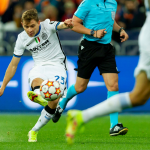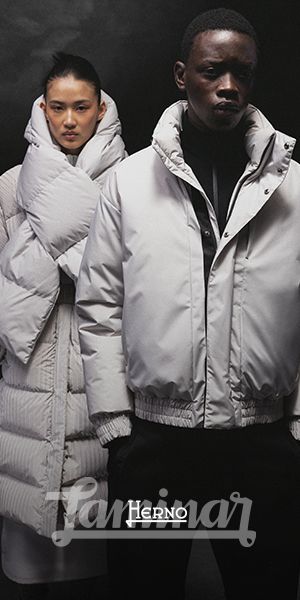
5 jerseys that were changed during the season
How rules ruin the aesthetics of new jerseys
September 21st, 2021
The new kit season has been and continues to be full of interesting ideas, with the latest releases showcasing new trends and style ideas. Some of the new shirts, however, have already undergone substantial changes from what the designers produced about a year and a half ago. The main reason for this is the absurdity of regulations drawn up in an era of football - and also aesthetics - that is completely different to the one we are living in, with obsolete regulations that do not match the new trends and objectives of the clubs at all. At every level, whether it be Serie A, UEFA, FIFA or the Premier League, certain rules sometimes distort the research work that designers do to arrive at concept kits that are then submitted to the teams for consideration. To imagine that a team, in 2021, cannot wear a shirt with different coloured sleeves that does not affect playability in the slightest, is unthinkable. It is not understandable how, despite the fact that there are sacrosanct rules to be respected, especially in terms of colour, small details can be the focus of compulsory changes. Among the many cases, five are the most striking.
Ajax: "Three Little Birds" + names and stars
Ajax is hands down the most tormented team in this respect. If the Eredivisie is permissive and freer in terms of regulations, the main blows come from UEFA. For the Champions League matches, in fact, the Amsterdam Lancers have twice changed the home kit and once the third shirt, dedicated to Bob Marley. In the first case, the iconic white jersey with red band of the Dutch has been modified both in the names (not present during the Eredivisie matches) and in the three stars placed on the back of the collar (which have become the three "X" of Ajax). On the third jersey - one of the biggest successes in terms of sales volume in recent years - UEFA has asked to respect paragraph 19.1 of the European regulations which prohibits different expressions to the club's logo and sponsors. No names, no stars and now no 'three birds' from Ajax's unofficial anthem.
Venezia FC: logo or symbol
From the Champions League to Serie A, with another jersey that has taken to the pitch in the last month in a different version to how it was presented. Kappa's masterpiece for Venezia FC represents a shot left in the arm due to a rule that displaced both the Turin-based brand's designers and the lagoon club. The Venetian team, which broke away at the Stadio Castellani in Empoli, has played the last three matches with a jersey without a logo because, in paragraph 1 of article 5 of the FIGC, the prohibition of having a double display of logo and name on the uniforms is underlined. The official explanation came directly from Fly Nowhere, specifying that "Venezia FC is playing without a logo because the kits were designed and drawn last year and adapted to the regulations of Serie B; it takes months to make them and it is impossible to make predictions. This is the unfortunate result of being promoted without having had time to change the plans".
Galatasaray: sleeve issues
Another extreme case comes from Turkey, where Nike and Galatasaray have been forced to partially change the design of their first game jersey. Initially launched with a diagonal as the main element of the pattern, the kit has undergone a change in recent weeks because, according to the UEFA Equipment Regulations, the shirt falls into the "hooped, banded, striped or checked" categories. The Gala jersey also appears to be graphically covered by the UEFA Regulations and would therefore be entitled to have different sleeve colours. The loophole lies in the fact that the diagonal line extends to the lower arm and not to the shoulders. Only if it was long could the sleeves be of two different colours. The Turkish team, however, is now obliged to play with two orange sleeves.
AC Milan: lettering, logo and pattern
The rule that prevents Venezia FC from playing with the logo is the same one that could be applied to AC Milan's third kit. PUMA has chosen the new template probably not considering all the rules regarding jerseys in each league. In Serie A, where the repetition of logos and names on the shirt is forbidden, it is likely that the League will be called to intervene again to either remove the logos from the pattern of the Rossoneri or to remove the lettering "AC Milan" from the central box. The biggest problem is the uncomfortable precedent there is with AS Roma and Sampdoria. In the 2019-20 season, the capital's club wore both the Lupetto di Gratton and the club's current logo on the third jersey; same reasoning for the Blucerchiati, who have been using the double logo (the classic crest and the cross of St George) for several years. Only by living will we understand if Milan will fall into the group of Venice or into the group of exceptions.
National team edition: China, Ukraine and North Macedonia
The bonus track is dedicated to national teams that have had problems with their uniforms over the last year. In chronological order, China national team launched their Nike new jerseys in March 2020, but in the last game (a 7-0 win against Guam) there was a substantial change to one detail of the kit: the logo of the Chinese federation was removed and the flag of the nation was added. A choice that has caused much discussion and is still shrouded in mystery. In Eastern Europe, both Ukraine and North Macedonia made changes at the last European Championships. The national team coached by Andri Ševčenko had to change its shirt because of a phrase - "Glory to our heroes" - on the collar. The verse, denounced by Russia, is part of a patriotic chant used during the anti-Russian popular uprising in Maidan in 2014, when Viktor Yanukovich was kicked out of Ukraine. Dulcis in fundo, the strange story of the kit that Joma produced for the Macedonian national team on the occasion of their first historic appearance at the final stage of a European Championship: just one day after the release of the new jerseys, Macedonian fans protested so loudly against the Federation for accepting garnet jerseys and not red ones as the country's tradition dictates that president Muamed Sejdini was forced to formalise the request to UEFA to re-establish the 2016 uniforms.








































